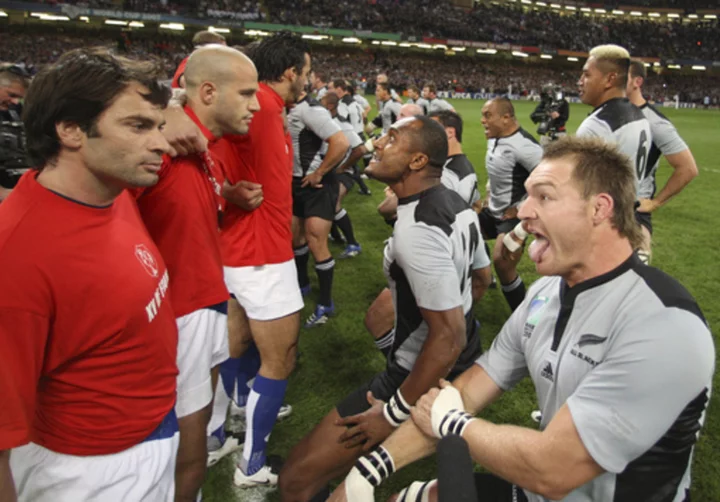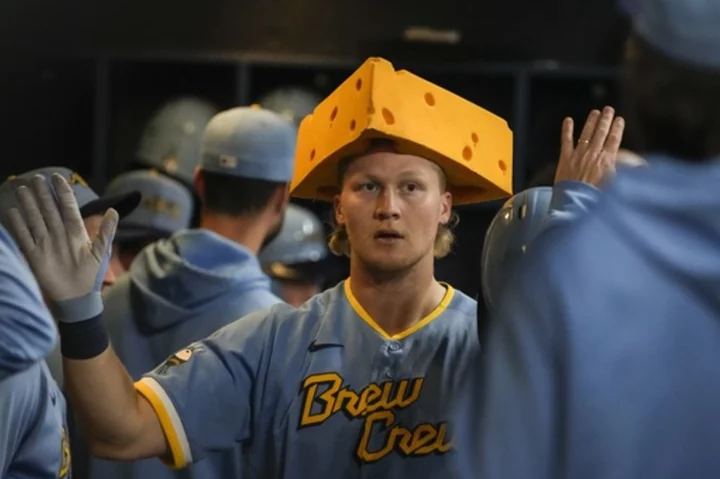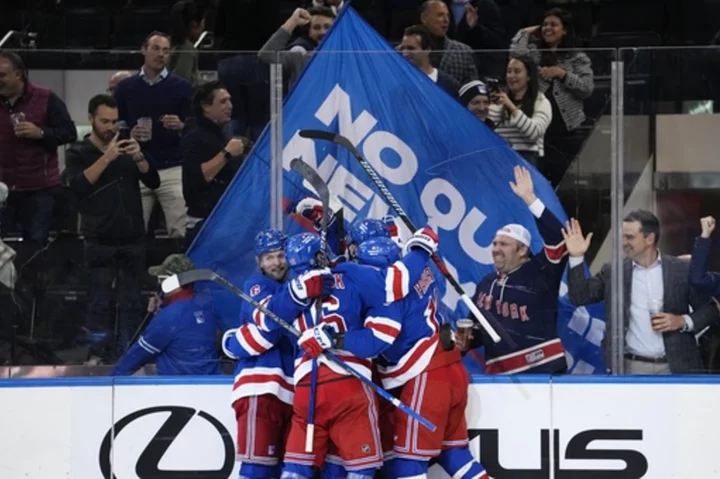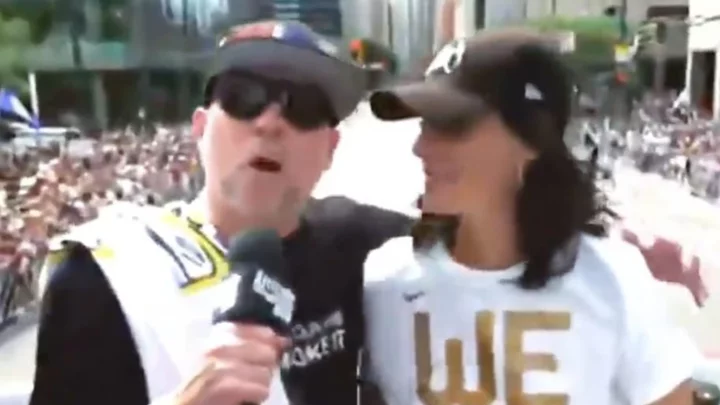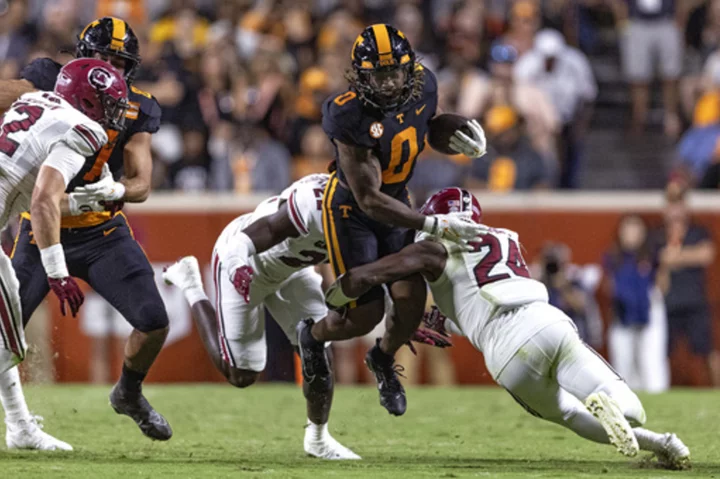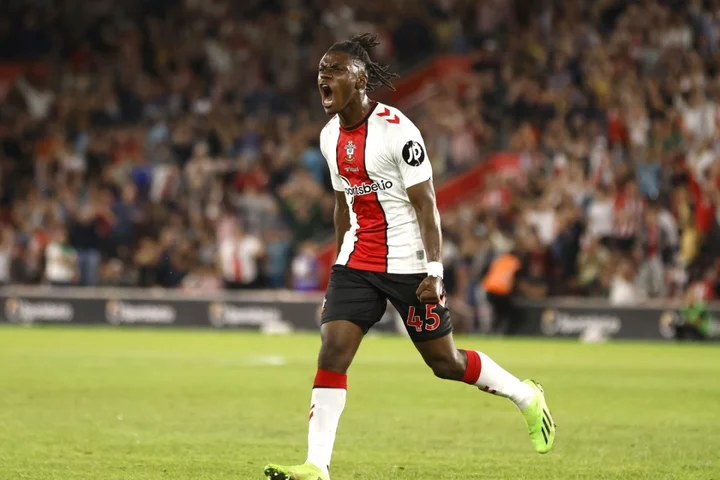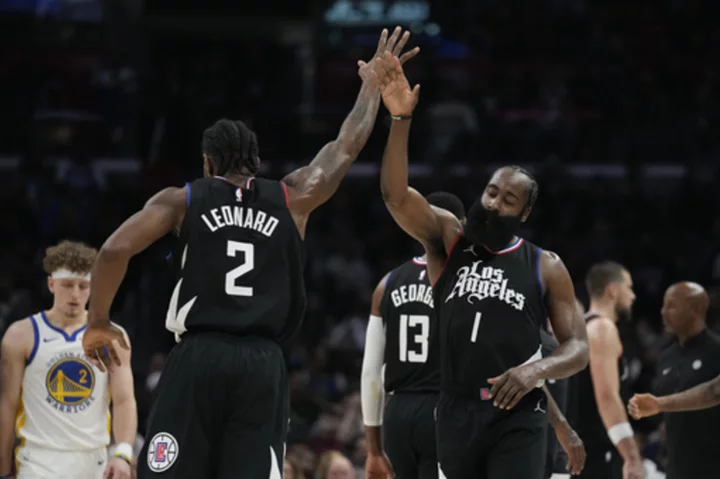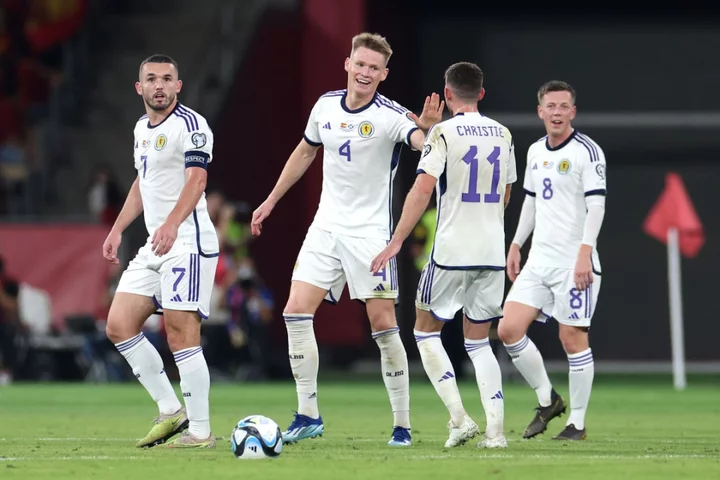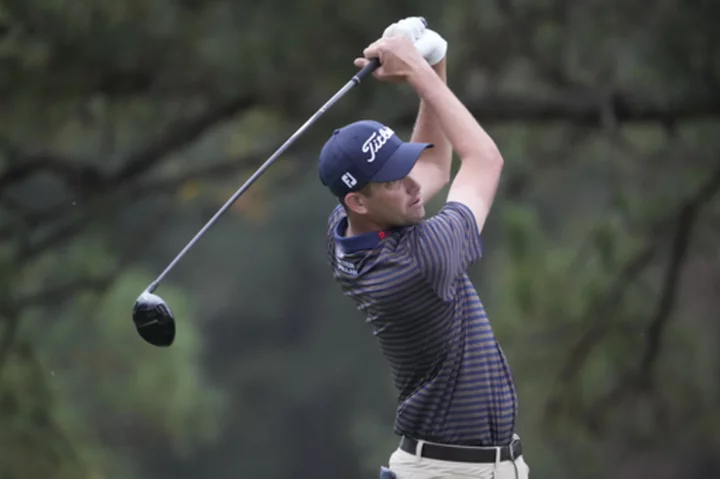Silence fell on Cardiff Arms Park as the first New Zealand rugby team to be called the All Blacks faced Wales before their epic 1905 test.
The South Wales Daily News reported the “Colonials" stood center-field and "sang their weird war-cry.”
The haka, then as now, stirs up rugby's blood.
Eyes popping, tongues poking, body slapping and feet stamping to a rhythmic chant, the pre-kickoff ritual is performed by the All Blacks to reconnect with the core of New Zealand culture, strengthen the team bond, and challenge rivals.
“It's such a powerful tool. It's a wonderful motivating way to start,” said Sean Fitzpatrick, who played 128 times for the All Blacks.
England No. 8 Billy Vunipola agreed.
“It lifts the All Blacks, but it also lifts the opposition,” Vunipola said. “They're laying down the challenge and are asking you, ‘Are you ready to rock ’n' roll?' You can see how much it means to them in their facial expressions and by how hard they hit themselves. It's special to stand in front of it, especially with the crowd around you creating a massive atmosphere.”
It will feature again at the Rugby World Cup in France.
THE BEGINNING
The first rugby haka was by the 1888-89 New Zealand Native team of mostly indigenous Maori on their six-month tour of the British Isles. The 1905 ‘Original’ All Blacks popularized the haka called Ka Mate on their tour. Ka Mate was composed around 1820 by chief Te Rauparaha of the Ngati Toa tribe. It commemorates him being pursued by a war party (Ka mate, ka mate — It is death, it is death) and hiding to escape them (Ka ora, ka ora — It is life, it is life).
The Maori social custom for welcomes, big occasions and funerals was adopted by New Zealand rugby teams 135 years ago to express a far-away culture and entertain crowds. When the 1924-25 ‘Invincibles’ didn't do a haka at two of their 32 tour matches in the British Isles, they were criticized for disappointing the crowd.
The haka reportedly appeared at home only between the two world wars, and only for the All Blacks' greatest rival, South Africa.
THE EVOLUTION
Over the years, the haka moved infield, the players formed a semi-circle instead of a line, it was hardly ever in sync, and they finished with a leap, also out of sync. It became embarrassing as entertainment and irrelevant as a challenge. All Black Hika Reid, a Maori, was approached to fix it in 1985.
It was a time when Maori were breathing new life into their culture and language, and fighting for reparations and confiscated land.
With this backdrop, Reid and fellow All Black Wayne Shelford persuaded the national team to learn what the haka meant to Maori, the proper moves and pronunciation. Shelford became captain in 1987 when New Zealand co-hosted the first Rugby World Cup with Australia, and he was sufficiently satisfied with his squad's haka to unleash it at home for the first time in 50 years.
When Zinzan Brooke made his debut in that World Cup, he was asked to lead the haka. He was nervous. “I wasn't worried about the game but I was about getting the haka right," he said. "I practiced all night, didn't get a lot of sleep. I did the haka right.”
But as the All Blacks took the haka seriously and delivered it with ferocious potency, opponents began to regard it as an unfair pre-game advantage for the New Zealanders and formulate ways to repay the intimidation.
The result has been some of rugby's greatest dramas.
THE CHALLENGE
When the 1989 All Blacks went to Dublin, new Ireland captain Willie Anderson was mindful how, weeks earlier, Welsh club Newport ignored the haka. Newport's players huddled near their tryline, so Shelford charged his team to the huddle and led a haka beside it.
Anderson got his Irish teammates to link arms, and he walked them slowly toward the haka, each step escalating the crowd's roars.
“The march forward was spur of the moment stuff,” Anderson wrote. “They were able to stomp their feet and make all sorts of gestures and we had to stand there and admire them? No, I wasn't having that. In an instant the crowd were on board and my heart was beating out of my chest.”
Australia coach Greg Smith told the Wallabies to turn their backs on the haka in the 1996 Bledisloe Cup matches. Captain John Eales said it was the biggest regret of his great career.
“We knew it was the wrong thing to do, but we still did it,” Eales said 21 years later. “And to this day it still irks me.”
In 1997, England's Richard Cockerill squared up to Norm Hewitt, the haka leader, and there was bumping and shoving. England captain Martin Johnson asked Cockerill, “What .... have you done?"
“I have no regrets," Cockerill said. "I think it's a sign of respect for Maori culture. It's great theater."
But that theater grew tiresome for the All Blacks by the early 2000s. They lost their passion for Ka Mate. So a new haka was conceived for and about the All Blacks called Kapa o Pango (Team in Black), unveiled in 2005.
Kapa o Pango celebrates the team and the country but it immediately polarized people. It ends with a throat-slitting gesture, interpreted by Maori as drawing life into the body but regarded by many others as violent and provocative. In 2006, the coaches of Australia and France implored the All Blacks to drop it, saying it wasn't a good look for rugby.
World Rugby cleared it, however, and the All Blacks modified the final action for years by drawing an arm across the body. But the throat-slit gesture is back.
Ka Mate was the chosen haka in 2007 in Cardiff, where France stood just a meter away, arm-in-arm, eyeballing hard and electrifying a hyped-up World Cup quarterfinal.
“We had not prepared to react to the haka in that way but just before going out on to the pitch they told us to act like it was a war, to show them that we were ready for a good fight,” France No. 8 Sebastien Chabal explained.
Such confrontations soon became outlawed. Even though World Rugby loves to promote one of rugby's oldest traditions, it enacted a “cultural ritual protocol” at its tournaments to defuse tensions. It forces opponents to stay in their own half during the haka, Fiji's equivalent cibi, Samoa's siva tau, and Tonga's sipi tau.
But drama has still ensued.
At the 2011 World Cup in New Zealand, haka met sipi tau and brought the house down. Then in the final, France came at the haka in a spine-tingling V formation. “A great moment we will remember all our lives,” France captain Thierry Dusautoir said.
Eight years later before the World Cup semifinal in Japan, England did a reverse V, as if to hem in the New Zealanders. By then, the haka had choreographed into an arrowhead with the captain at the tip.
“The haka,” Wales coach and former All Black Warren Gatland said, “is about standing up and accepting the challenge because the haka is challenging lots of things about you — how tough you are, how physical you are. It's important you don't take a backward step and you respond respectfully.”
___
AP rugby: https://apnews.com/hub/rugby

